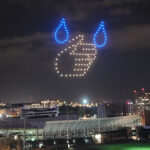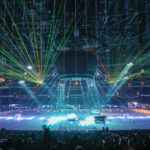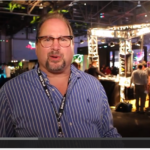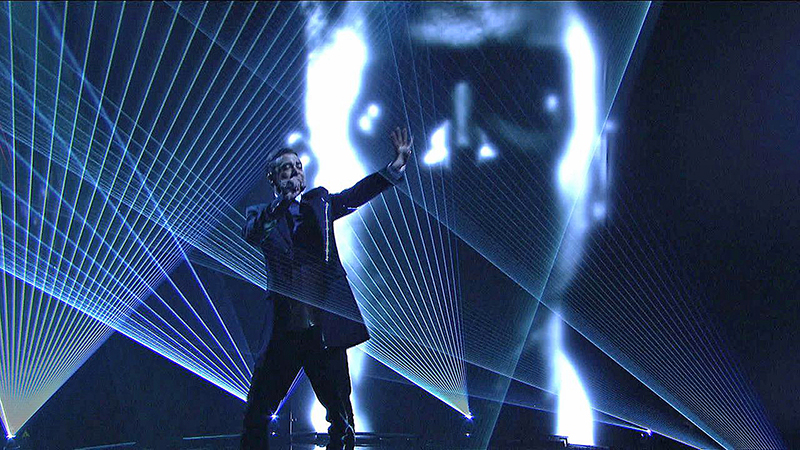
Fireplay Exec Remains at the Top of His Craft’s Evolution
It’s not often a design firm has a partner whose main role is to curate all of the special effects for their various projects. Since Fireplay’s inception, in 2016, Kelly Sticksel has done just that, serving their clients in that capacity. Normally many designers will be literate in the majority of effects out on the market. But do they know how to cue lasers, be up on their knowledge of all things combustible, and know how to tinker and invent gear that is not currently on the market? The answer would be no in most cases. Hence hiring a Special FX Designer to aid a firm turned out to be a sparkling idea. But what fueled Sticksel’s interest in the first place, and how did he get in this position? PLSN sat down for a chat about his journey.
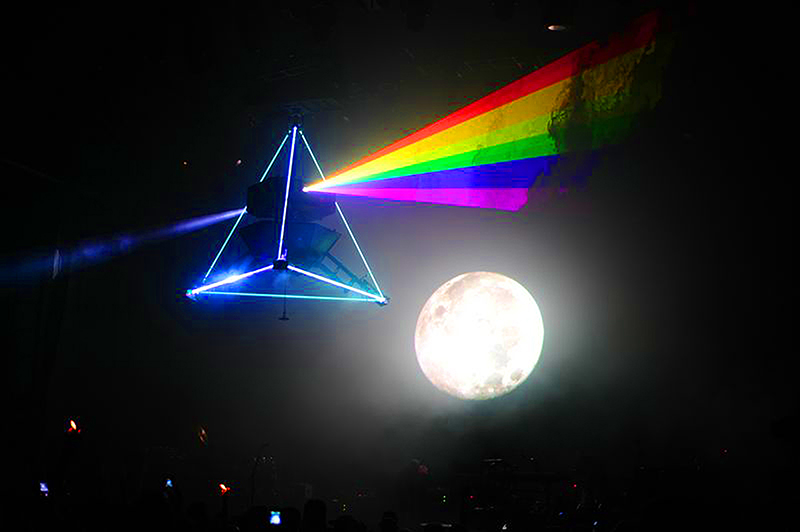
“I come from a family of bankers; I had a degree in finance and IT and was well situated to move up in the ranks of that world. Then sometime in the early 80’s, I went to a Pink Floyd show. I was fascinated with the emotion this show generated, with just light. I had become a hobbyist with some hack lasers and pyro back in the 70’s — I shocked the crap out of myself a few times and burned off more than a few eyebrows. But at that pivotal point, I started thinking, ‘I may be a bad musician, but I can tech. I bet I could make some money and put a few smiles on people’s faces doing this stuff.’ I took a left turn and headed in the direction of lasers,” Kelly explains.
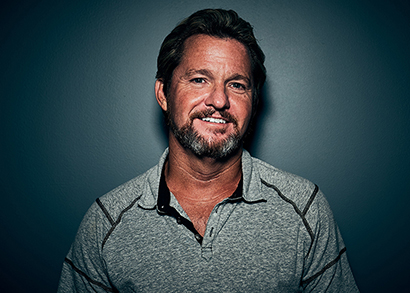
Learning the Ropes
Sticksel started up his own company, Magic Fire Lasers, in his hometown of Dallas and as a result, started doing corporate shows. He got a lot of help from some other local folks in Texas who had made their mark. “John Wiseman, Gary Carnes, Jimmy Page, Walt Meador and Bruce Jordahl were all mentors of mine. I was a young man who aspired to master my lasers, and I understood how they worked. But those guys were influential in showing me the ropes, all the other stuff one needs to know about working on shows other than their own gear. I wouldn’t be where I am without them. I also learned early on to team up with quality people that knew more than me. Guys like Howard Ungerleider, who I always looked up to, were a big supporting factor.”
By 1990, Kelly had turned his little company into the Excitement Technologies Group. He expands on this time period. “I started expanding into all sorts of special effects and not just lasers with this group and it gained traction quickly. We started doing lots of auto shows and general sessions. People hired us for that ‘Wow” effect. We grew fast. Soon we had an office in Sydney along with associates in New York state and California.”
He had a good 10-year run with those events. “Then 9-11 happened and, as many of us recall, the bottom dropped out of the corporate market. We started turning more attention to the music industry right before that, and that move kept us afloat. During a recession, people still spend good money to escape. That’s what I like about the entertainment business — we have the ability to pull them out of their day-to-day experience and excite them. That’s why I got into this line of work. When I saw that first Pink Floyd show, I was amazed at the emotion the production brought out of me and my friends.
“This is still what fuels us to get up and go to work in the morning, to work 20-hour days for weeks at a time to get shows just the way we want them,” Kelly continues. “So, after 9-11, we just shifted more to the touring and music industry and weathered that storm. We continued cutting our teeth and building bigger and better things.” Sticksel sold his company to Pyrotecnico, the family-owned business that has been in the fireworks business for 100 years. His friend Rocco Vitale kept him working within that company for the next five years, and he has nothing but praise for that company and his friends there.
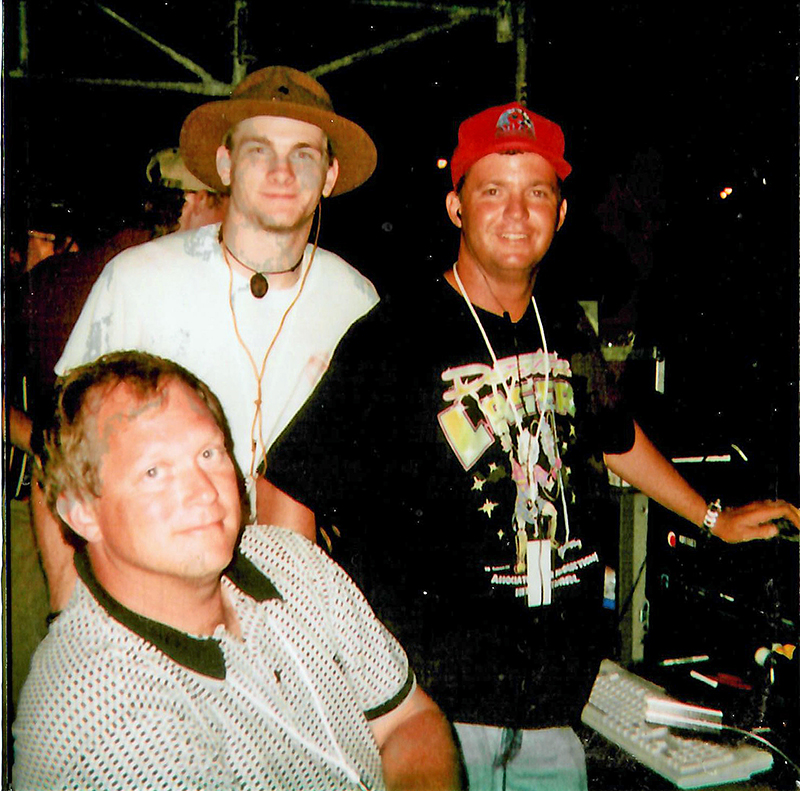
It All Starts with the Music
When it comes to creating looks for his clients, Kelly mentions, “All the cueing and programming I do is based on the musicality of the production. It’s kind of my signature, so the approach is based on this no matter if I am programming Country, Pop or R&B; the look and visuals of the show get closely tied with the dynamics of each track. The music dictates how it ends up looking along with my ideas and concepts. Just because we have the gear doesn’t mean we have to use it in every song. It’s a very different way of thinking than the looks I saw on the more traditional country tours and I do think that this more musical, dynamic big picture approach to our work is why were really being noticed in the country music scene.
“I may go into a project thinking I will need X amount of lasers and a wide variety of FX.” Sticksel says. “But I won’t search to find a place to use every laser and effect in the show. I let the place in the show find the cue. We may come to a point in programming where I say, ‘Hold on. This is the precise moment we need to use a certain effect we brought out.’ At other times, I may end up not using something we spec’d at all. Moreover, once we find that place, it becomes a coordination with other elements — lighting, scenic, even musical direction — to ensure the effects are impactful, yet not competing with other elements. It’s always about balance and storytelling.”
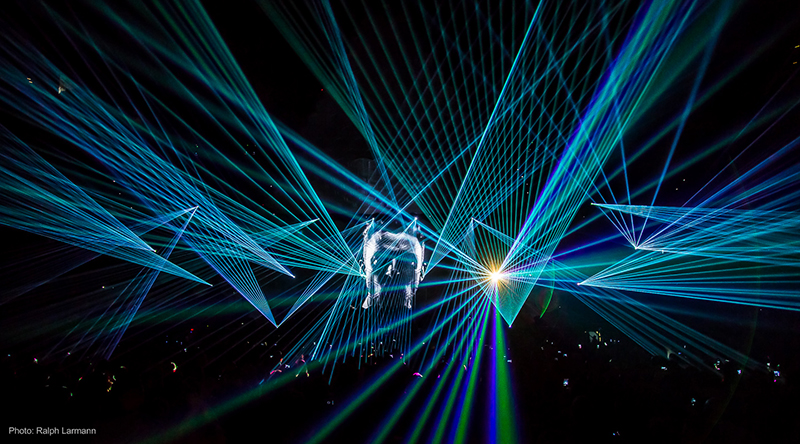
Making Major Advances
Come 2013, superstar Justin Timberlake was gearing up to embark on his 20/20 Experience tour, a 15-month long spectacle that grossed over $230 million. Sticksel, along with designer Nick Whitehouse, strove to blaze the trail in how to do large-scale audience scanning with lasers in America. “This was a long-drawn process, but we brought in a close group of my consultants and figured out a way to work with the Feds to allow us to be able to do it. We developed new technology with manufacturers. It led up to what has been one of the more epic performances that Saturday Night Live has ever featured.
“We brought in a massive laser and video show,” Sticksel continues. “It was one of the toughest gigs I have ever done. Everyone thought what we were doing was illegal and, by the time it was over, lawyers were actually involved. All along, we knew what we were doing was absolutely safe — ballsy, but absolutely safe. It was just new… To this day, Justin still says it was one of his favorite performances ever. I must note that collaborating with JT on his projects is always special — and we continue to push boundaries by his side.
“Nick, [set designer] Josh Zangen and I all worked together to put that together,” Sticksel adds, noting that he had brought the tour to Pyrotecnico by that time. “We had the first variances that allowed for true audience scanning lasers using this new technology and techniques we’d developed. We knew this team was something special and interesting things were on the horizon — especially with the changing nature of the touring model and music streaming. After the tour ended in January of 2015, we all started talking more regularly about doing something new. Josh was a seasoned theater guy who collaborated with Nick on projects like Britney and Kylie. He just ‘Got it’ when it came to touring production design. He could design stages, props and scenery, he just had great ideas. The three of us just clicked after 20/20.
A New Music Business Model
“During this time, we were all watching the music model change,” Sticksel says. “No longer were tours simply the promotional element driving artist recording revenues — the tours were now actually becoming the revenue source. Yet artists still needed to make the tour experience amazing for their fans, and many ended up writing checks after the tour was over.
Plus, tour production was fragmented — management was hiring expensive designers, expensive production designers, expensive this, expensive that… It was crazy. We all knew each other — all of our counterparts. Most of us had agents taking a cut and egos were running a little crazy across the board — not really conducive to a healthy bottom line. As a way to better service our clients in this new digital/streaming era, we started thinking about the possibilities of creating a team that could service all the needs of a touring production under one roof.
“In the end, we knew we could dramatically increase efficiency, drive creative to a new level — and make the artist some money at the same time. The planets aligned for us (of course not to minimize the work that went into this concept). I have to credit Nick for conceiving the plan, selling us — and selling to our investors. Nick is like that — always thinking of a better way — always looking for the win/wins. We started recruiting others with similar client-centric DNA to round out our services and support structure. Fireplay was formed.”
Their main office is in Brooklyn, where Josh heads the creative division, though Kelly resides in Dallas. Their reputation in the Nashville scene has spread quite a bit in the last two years with clients such as Lady Antebellum, Jason Aldean, Carrie Underwood, Thomas Rhett included. This demand has led to the team opening a new office right there in Music City. “We have some amazing talent about to come on board in that office — I just can’t reveal who they are quite yet.”
For now, Kelly looks after the artists in that region on behalf of Fireplay and functions as a creative producer on most of their Nashville tours. “We’ve assembled quite a team of CAD artists, designers, production managers and lighting directors, all of whom have toured and have a wealth of experience to share with our clients. More importantly,” he adds, “we’re hiring more people as we speak.”
Sticksel notes that Fireplay is also careful to maintain a close-knit group of content producers, directors, musical directors and choreographers within their realm. “We like to keep these disciplines fresh, so we are careful to bring the right associate in for the right job at the right time. We never want to force fit a show director — it’s too easy to fall into a rut.”
Art, Innovation and Business
As far as preferred vendors and the gear they spec, “we work hard to obtain competitive bids for our clients. While it’s always our clients’ choice on vendors, our volume and collaborative vendor relationships allow us the ability to put the right gear on each show — at a fair price. We’re also not all about having to use the latest gear on every project. We like to use the tried and true fixtures as well — we choose our fixtures for the features they have — not just because they’re new. Don’t get me wrong, we love incorporating the latest and greatest, but at the end of the day, we are all about the artist having an amazing show while making the profits they desire at the end of the trek.
“Vendors may have less wiggle room in a fleet of newly unboxed fixtures, but if we can get great service in a well-maintained older fixture, why push everyone to bleed? In being fair, this creates the goodwill that drives our core values at Fireplay. But that’s not saying we don’t select certain tools we deem necessary for a certain show. For example, we are keen on certain lights being used when we incorporate the BlackTrax or Follow-Me systems on a show. Other times Nick may decide he needs over 100 of one specific type of hybrid fixture for a certain purpose. Then we will let the vendors show us what they can offer during the bidding process.”
Tinkering with gear is something that Kelly has done since he worked out of a garage. He recalls times where he would send his crew home for the weekend with the only request being that there was enough nitrogen, acetylene and steel lying around for him to construct another new toy. “My favorite thing is inventing. When I was young, I had no choice but to build things myself, and I found I enjoyed that part of the biz. I’d spend weekends welding or just playing with lasers. Nowadays, if I need something engineered that hasn’t been done, I know the right people to call who have specialties.
“Scaling the show is important with me as well,” he adds. “Take the Thomas Rhett ‘Very Hot Summer’ tour we just created, for instance. His light rig is fairly big, but it can compact into tighter places. With this rig, I chose to put my lasers on the ground shooting up. The design called for a lot of vertical trusses with beams of light everywhere. Having the lasers shoot upwards gave us a whole different look to the show and they could still read with other lights on behind them. For one song, TR had a single laser overhead that worked to form a backlight cone. That was the basic use of this one tool. Of course, I’ve done that gag a few times in the past (wink) — but it just played beautifully in this moment — and TR is a true showman, and he loves to milk it.”
After being in the business for 35 years (30 professionally), Kelly still has the passion he did as a younger man. Working for Fireplay has been nothing but good for him. “We certainly shook the rug for a design firm, to accomplish this mission. And, yes, we’ve painted a few targets on our back for pushing boundaries. Frankly, I’m pretty proud of what we are doing.”
For more information on Fireplay, go to www.fireplay.com
